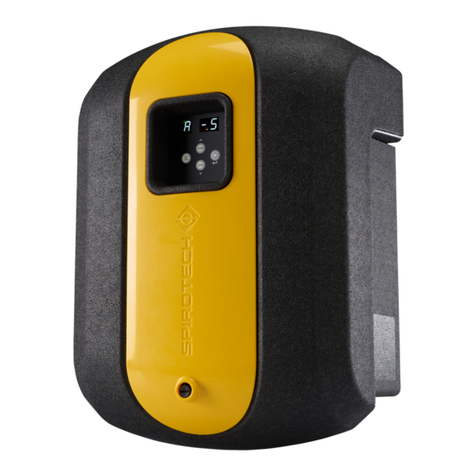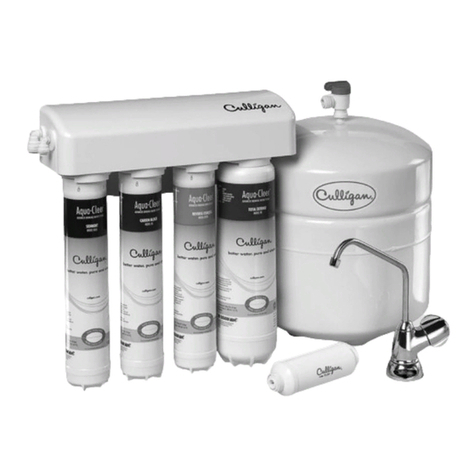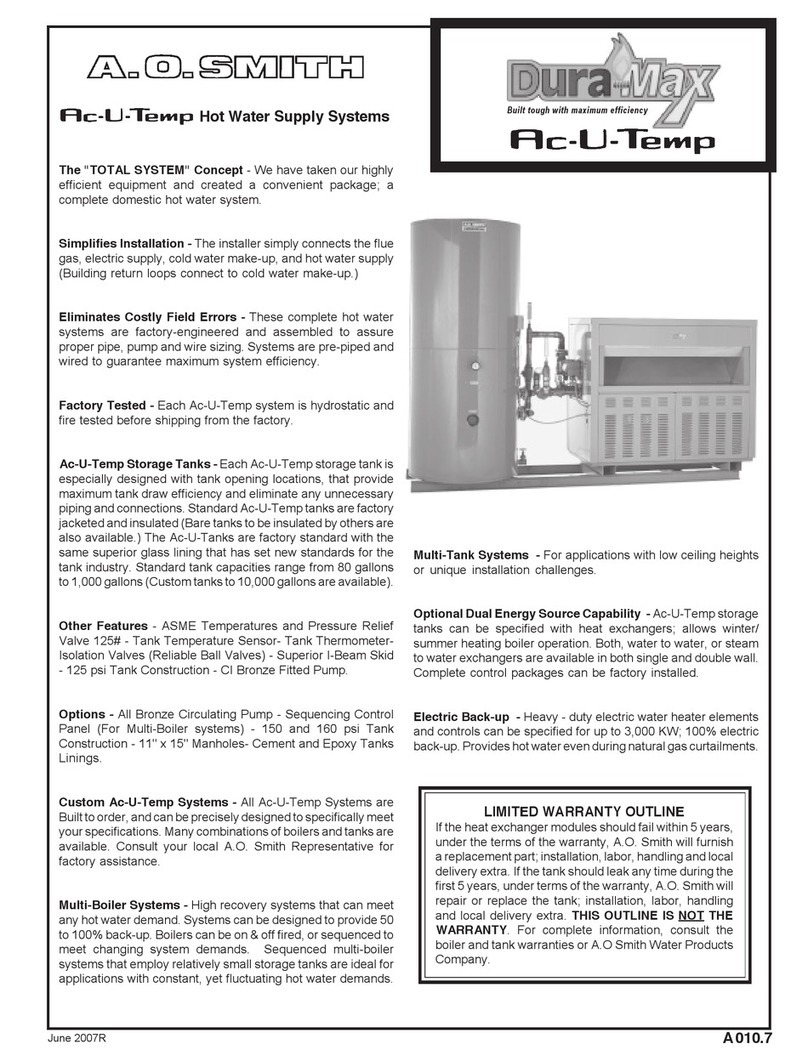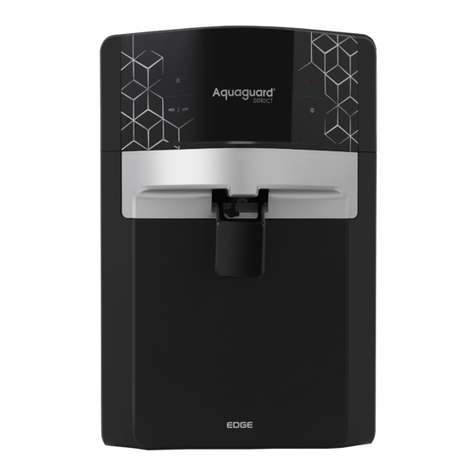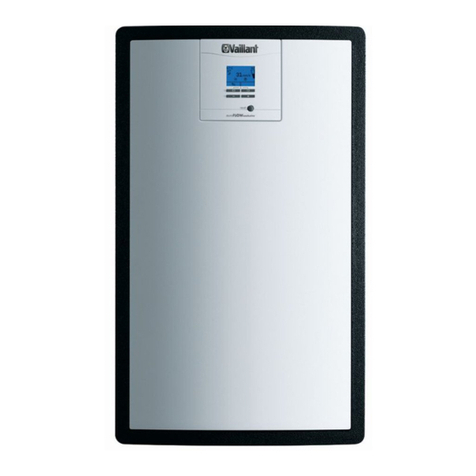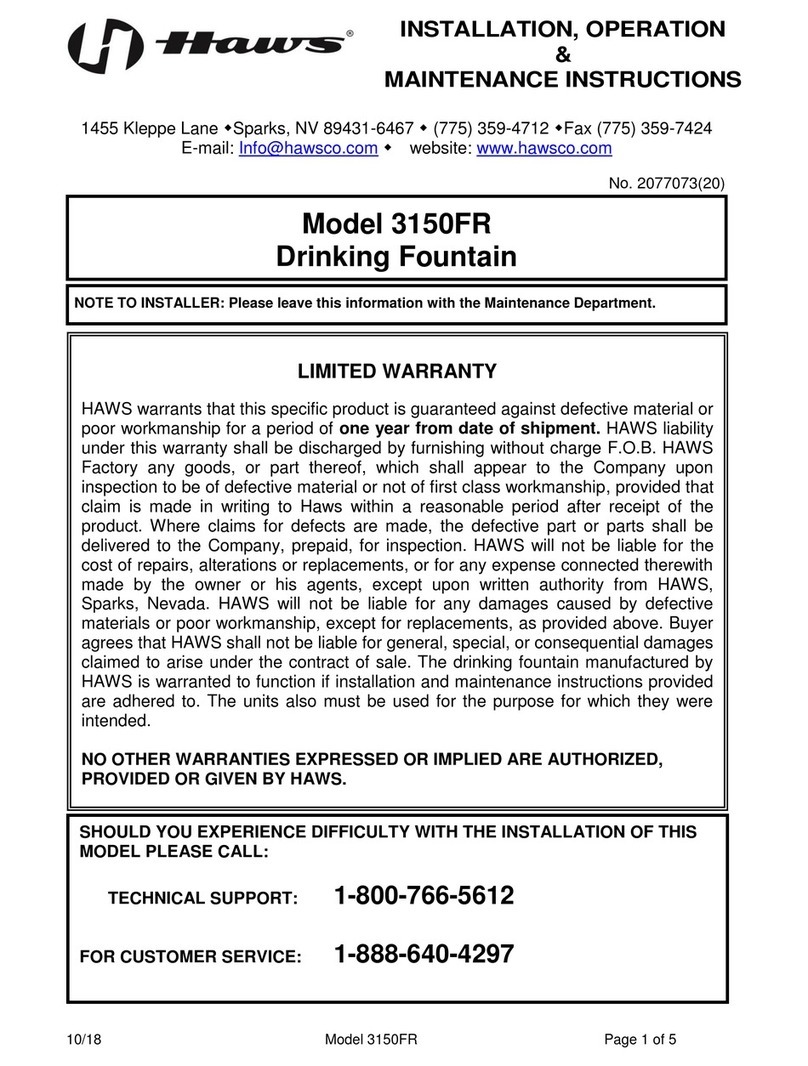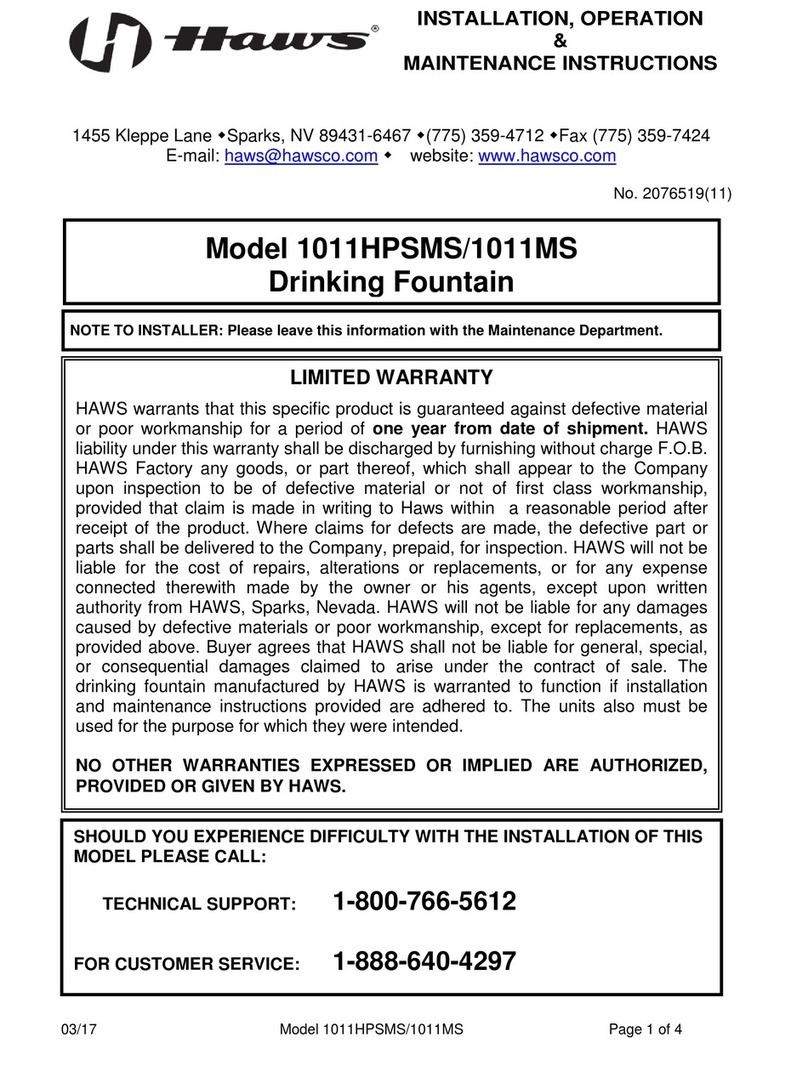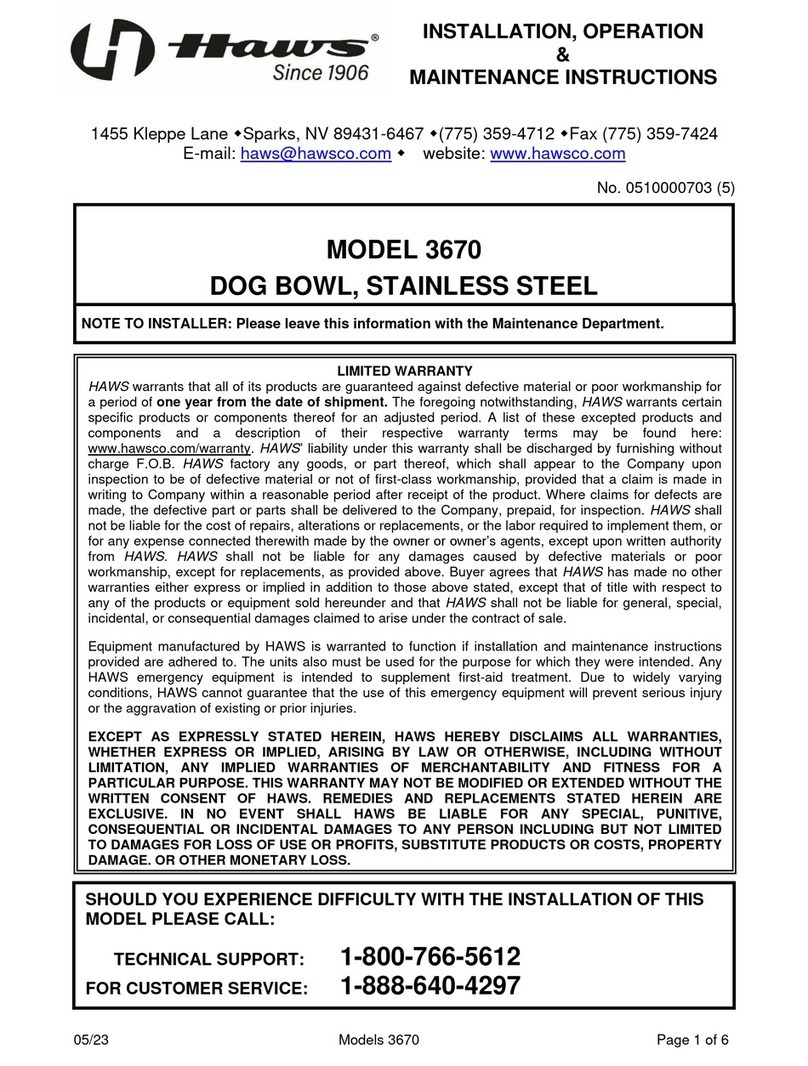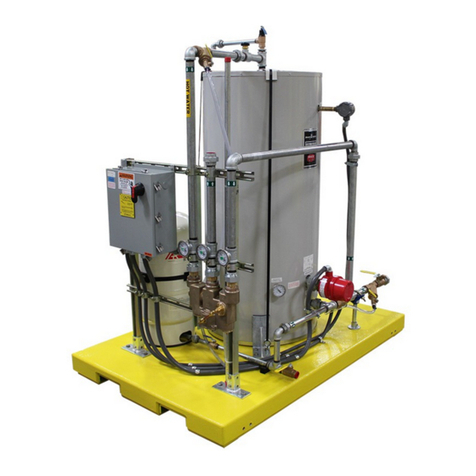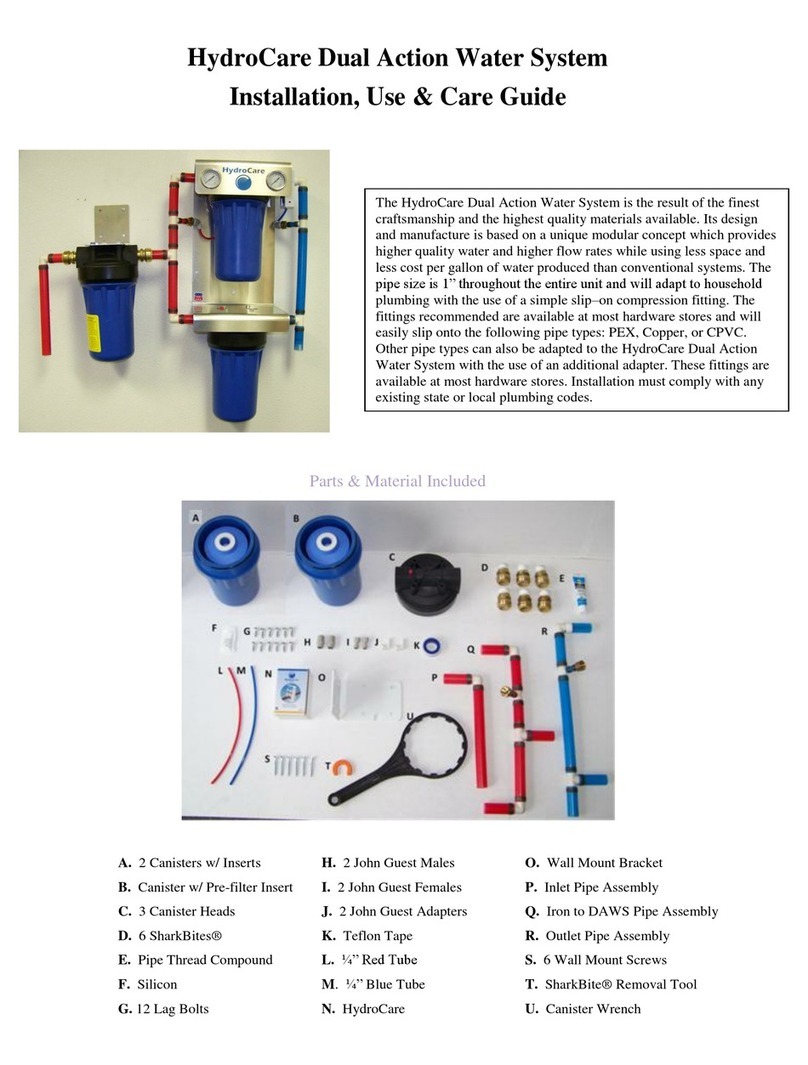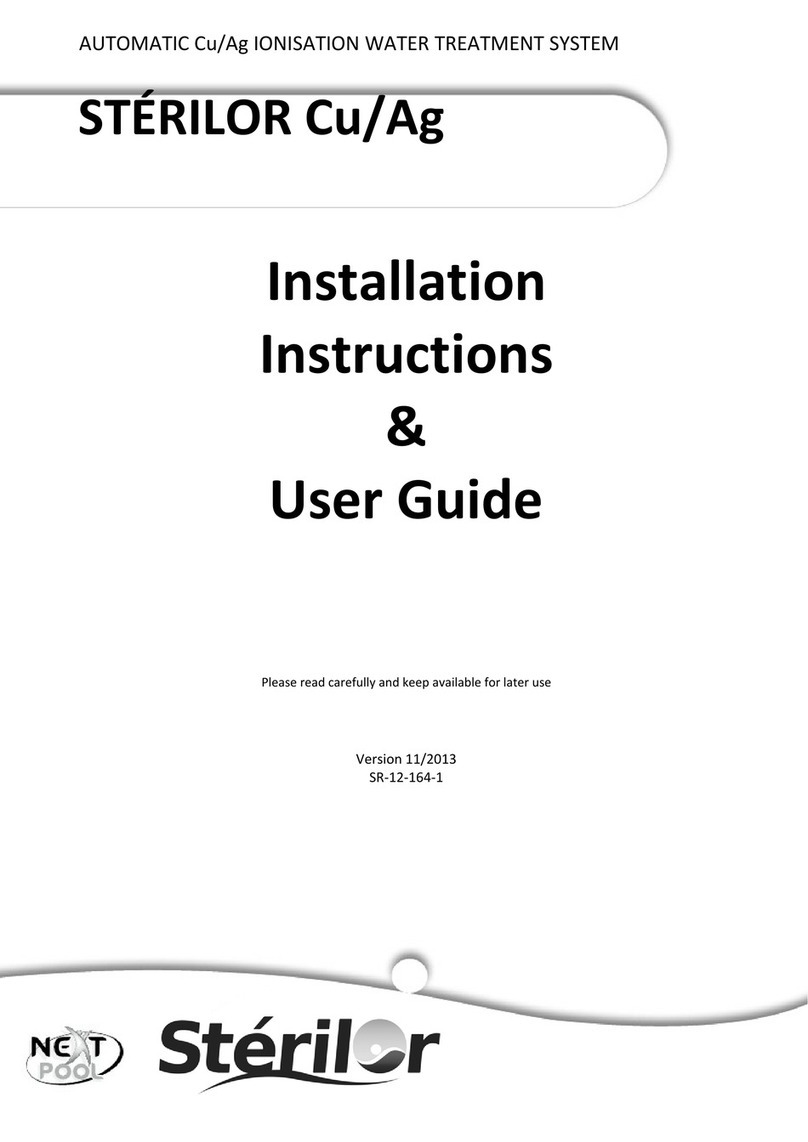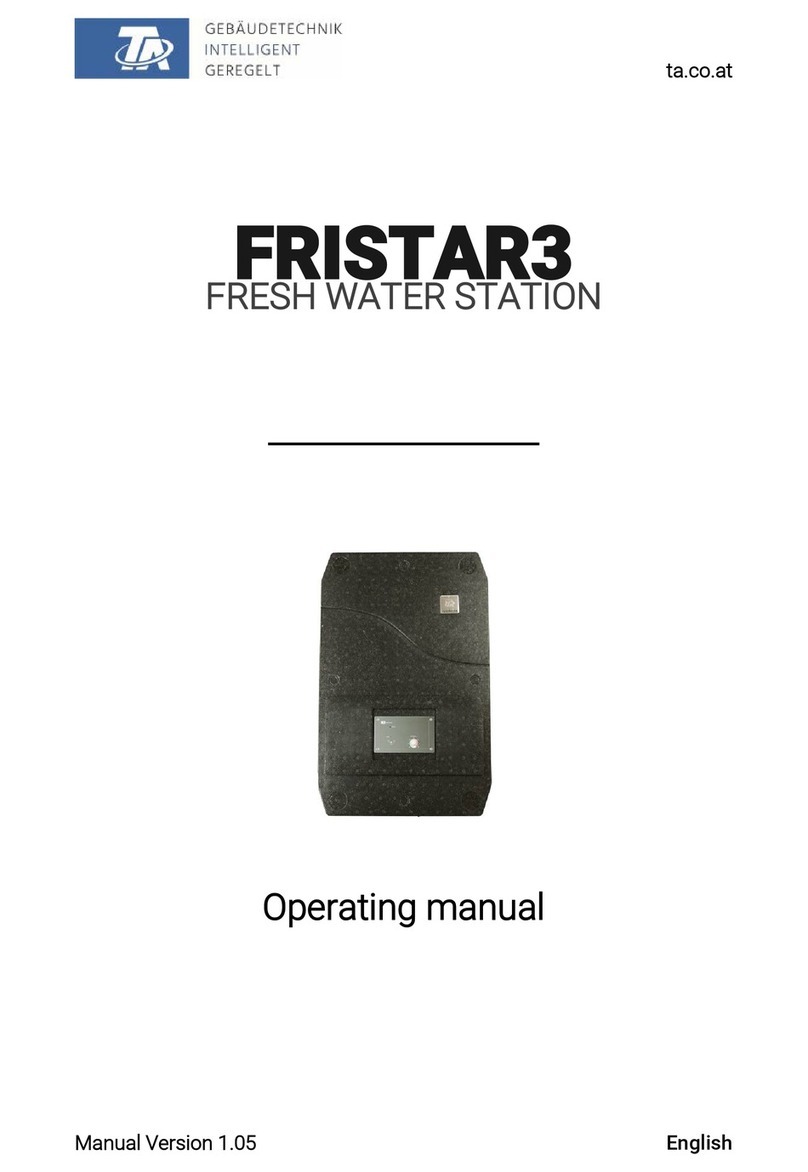
01/10 Model 2000SM Page 4 of 9
INSTALLATION PROCEDURE
STEP 10: Activate unit by placing a bottle or cup in front of the sensor. If sensor does not
detect the object at the appropriate range, see Sensor Troubleshooting Guide.
The pressure regulator may need to be adjusted to better complement the input
pressure at the installation site. To do so, loosen jam nut on adjustment knob and
rotate knob as needed (move knob in to increase flow; out to decrease flow). Re-
tighten jam nut when the desired flow is obtained.
STEP 11: Water should be run through the system for approximately five minutes after the
unit is installed and anytime the filter cartridge is replaced in order to remove any
carbon particles and air bubbles from the system.
MAINTENANCE
NOTES:
1. WARNING: Make certain power is disconnected before servicing to reduce the
risk of electrical shock.
2. CAUTION: Do not use an abrasive cloth, brush, polishing compound, or
abrasive cleaner to clean any part of the unit.
3. Do not touch the circuit board for any reason.
4. The interlock switch below the fuse holder cuts the power to the unit whenever
the unit is opened from the front.
5. There is a red lockout switch provided on the magnetic latch that may be used
to hold the latch open. If desired, depress the latch and flip the red switch;
this should retain the latch in the “open” position.
STEP 1: Periodically clean the y-strainer located in the solenoid valve body.
STEP 2: The contaminant removal achieved by the unit’s filtration can also permit the growth
of bacteria. For this reason, the unit purges itself every 24 hours that of non-use.
However, bacteria may build up in the drain; therefore, it is recommended to
regularly clean the drain basin with a disinfectant such as Clorox® Disinfecting
Cleaner.
To access drain basin for cleaning, open the upper body panel and remove the two
screws holding the drain grate in place (requires T-20 Torx driver).
STEP 3: Periodically assure that the sensor window is clean on the outside.
STEP 4: The filter has a 2500 gallon capacity, but should be changed after approximately 2000
gallons, or sooner if flow output begins to decrease. Periodically open the upper
body panel, hold interlock switch down, and activate the unit (note that this will cause
water to dispense). The green LED of the filter monitor indicates that total gallon
setpoint has not yet been exceeded. If the yellow LED activates instead, this
indicates that 2000 gallons has been exceeded and the filter should be replaced.
Twist the filter cartridge clockwise a quarter turn (when viewed from the top) and pull
the cartridge down (it is not necessary to shut off the water supply; however,
lessening inlet pressure can make filter changes easier. Do not leave filter head
pressurized without a cartridge if a new cartridge is not going to be installed
immediately).
Apply a thin coat of NSF-61-certified o-ring lubricant (supplied) to the o-rings on the
top of the filter cartridge (avoid excessive application); cartridge may be damaged
otherwise. Firmly insert new cartridge and twist counter-clockwise (filter head and
cartridge must be aligned properly for cartridge to seat into head – note arrows on
cartridge). Reset the filter monitor by temporarily removing a battery (LEDs should
flash to indicate that monitor has been reset).
Water must be run through the new filter for approximately five minutes to remove
any carbon particles and air bubbles.
